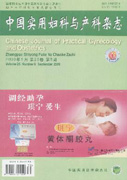Uterine fibroid is a common gynecological disease,patients with which would present no symptoms or severe symptoms based on the location and size of focus.According to their relationship with uterine cavity and serosa,uterine fibroids can be classified into several types.In clinical practice,different measures should be taken depending on the type and size of fibroids as well as the age,fertility desire,reproductive function and symptoms of patients.This paper elaborates the classification of uterine fibroids and corresponding strategy of clinical treatments.

